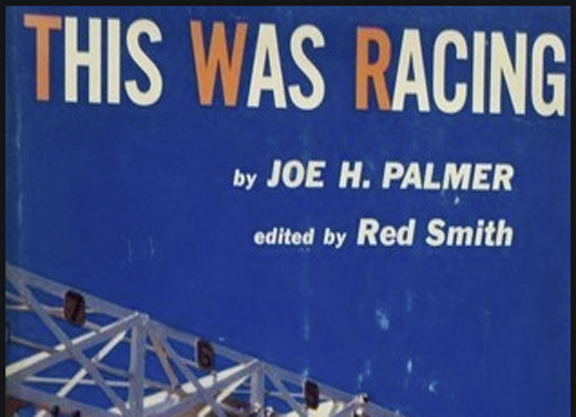This Was Racing
By Joe H. Palmer
Pick a favorite book about Thoroughbred racing? Not an easy task for most of us long in the game.
As for myself, I still possess an extensive library of racing tomes, ranging from venerable to hot off the press and including everything penned by Jay Hovdey or Ed Bowen, many of which I have read and re-read to the point of frayed pages, but for the past half-century one and only one stands out: This Was Racing. The book that got me hooked. I can honestly claim to have owned as many copies as a small bookstore, and for many years I gifted them to anyone I thought would appreciate the contents.
This Was Racing is a collection of some of the work of Joe H. Palmer, the man referred to by Red Smith at the time as not only America's best-known racing writer, but in the opinion of many, “the best writer of sports anywhere.”
Palmer passed away in 1952 at the age of 48, but not before he distinguished himself as the Racing Editor of the New York Herald Tribune and Columbia Broadcasting System's Turf Analyst, yet his words still ring true today, evoking most of the essentials that draw the rest of us to the game with his mastery of the parlance of the racetrack.
No stories of modern equine heroes here, no Justify or American Pharoah, no Zenyatta or Rachel Alexandra…they weren't even twinkles in a stallion's eye when Palmer wrote his tales. But these are stories that are what is meant when they say the more things change the more things remain the same.
This Was Racing encompasses an entire range of racetrack anecdotes and stories, gleaned by Smith from Palmer's columns and includes his insight into the horses and jockeys, owners and trainers, bookies and horseplayers who populated the great tracks of his day; Hialeah, Saratoga, Keeneland, Churchill and Pimlico, Belmont and Monmouth, all painted by a master's brush in their golden age.
My favorite might be one called “Horse on a Man,” telling a tale on jockey agent Harry Howard, who Palmer described as “slightly taller than a sign which says 'keep off the grass.'”
Or “The Odds Were Right” about one W. T. Anderson, a gambler who would jump on any wager when he thought he had an edge, even offering a fisherman odds he doesn't know his own catch.
Or “By Any Other Name” wherein Palmer recounts the tale of an owner who named his horses “very unattractively” figuring that hunch players wouldn't bet on Ugly Mary or Losing Clon and he'd get better odds when they won.
Yes, it's a throwback to the Damon Runyon era, the days when racing was America's most popular spectator sport, a place of mystery and romance to most, but the sentiment still remains. Racing rules.
Not a subscriber? Click here to sign up for the daily PDF or alerts.






